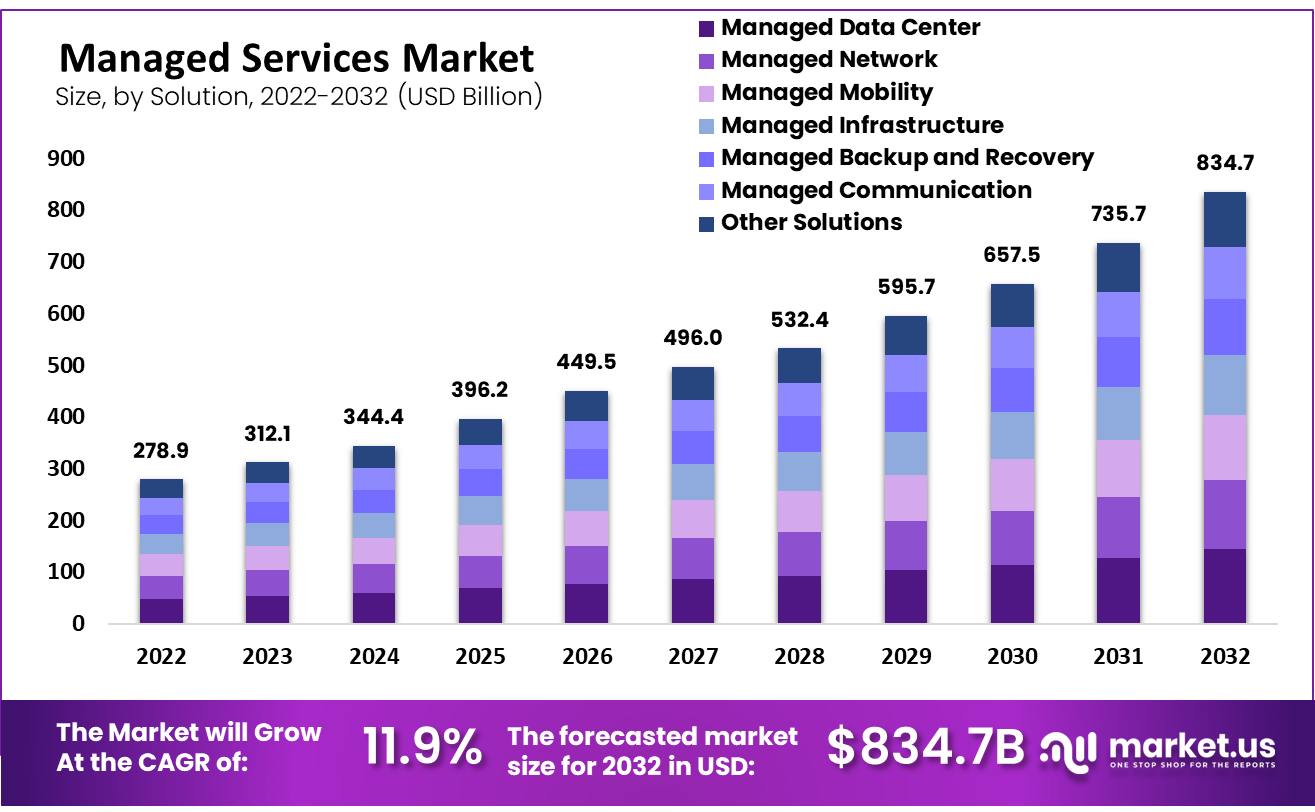
As business technology becomes more complex, you may face a critical decision: choosing between the break-fix model or managed IT services.
Are you grappling with unexpected system failures, frustrating downtime, and mounting costs associated with a break-fix approach? You’re not alone.
Recent statistics show that U.S. businesses lose an average of $54,000 per hour due to downtime and data losses from IT disruptions. This figure highlights the need for a more proactive, reliable model.
“Tech support is at its best when it’s able to provide proactive support whenever necessary,” says Jeffery King, Founder of AT-NET. “The more proactive it is, the more likely people will be able to rely on it, leading to increased client confidence.”
Managed services may be the solution, promising consistent monitoring and maintenance, quicker response times, and predictable monthly fees.
But what are the actual pros and cons of the two models? This article will dive deeper into understanding break-fix vs. managed services.
Break-Fix vs. Managed Services: Which One is Right for You?Make the right decision for your business by partnering with AT-NET today. |
The Pros and Cons of the Break-Fix Model
As you weigh your options between break-fix and managed IT services, it’s crucial to understand each model’s advantages and potential drawbacks. Here’s a closer look at the break-fix approach.
Break-Fix Pros
The break-fix model is relatively straightforward. If an IT issue arises, you call in a technician who charges an hourly rate to diagnose and resolve it, hence “break-fix.” This approach can be advantageous in specific scenarios.
Firstly, you pay for what you need when you need it. If your IT infrastructure is relatively stable with infrequent disruptions, you could save money compared to the predictable but regular monthly fees associated with managed services.
Secondly, the break-fix model gives you flexibility. There’s no long-term commitment. You simply call a service when needed and aren’t tethered to a service-level agreement.
Considering that 39% of businesses saw their budget grow in recent years, a break-fix could be a good option.
Break-Fix Cons
While generally helpful, the break-fix model is not without its downsides.
One key drawback is unpredictability. Sure, you’re only paying when something breaks, but costs can quickly balloon when that happens. From emergency repairs to downtime losses, it’s always a gamble.
Response time is another issue. Without a Service Level Agreement (SLA), you’re at the mercy of the technician’s availability. This can result in prolonged downtime and business disruptions.
This especially holds for remote working environments, considering that 82% of businesses continue to allow their employees to work remotely.
Finally, break-fix services are reactive, not proactive. They’re great for putting out fires, but they don’t provide ongoing monitoring and maintenance to prevent them.
This approach can lead to repeated system failures and potentially expose your business to cybersecurity risks.

Source: Market.US
The Pros and Cons of the Managed IT Services Model
The alternative to break-fix is the managed IT services model. This approach involves partnering with a Managed Services Provider (MSP) for a flat monthly fee to handle your IT needs, from routine maintenance to cybersecurity.
But, like any business decision, there are pros and cons to using managed IT services.
Managed Services Advantages
Managed services can be a game-changer for businesses. This proactive model focuses on preventing issues before they occur through regular monitoring and maintenance and is expected to be worth $834.7 billion by 2032 with a compound annual growth rate (CAGR) of 11.9%.
With a managed services provider, you have access to a team of IT professionals who can respond rapidly to resolve issues—your business benefits from reduced downtime with service level agreements promising specific response times.
Another significant advantage is predictable costs. With a fixed monthly fee, you can budget for your IT expenses accurately, avoiding the surprise bills that can come with the break-fix model.
Managed IT services also provide access to the latest technologies and expertise without needing full-time, in-house staff. This can be invaluable in the rapidly evolving tech landscape.
Managed Services Disadvantages
Despite these benefits, managed services may not be the perfect fit for every business.
The most notable disadvantage is the ongoing expense. Whether you use the services or not, you’ll still pay the monthly fee. This cost might outweigh the benefits for businesses with very infrequent IT issues.
Also, you must choose your MSP carefully. While many MSPs offer excellent service, some fall short. Poor service delivery, inadequate skills, or lack of responsiveness can turn an MSP partnership into a nightmare.
As such, due diligence is crucial in selecting an MSP that will truly support your business.
Lastly, remember that entering a contract with an MSP typically involves a long-term commitment. If your business situation changes or you’re unsatisfied with the service, getting out of that contract can be difficult.
Break-Fix vs. Managed Services: The Complete Breakdown
|
Small Businesses |
Medium Businesses |
Large Businesses |
|
|
Break-Fix Model |
|||
| Advantages | 1. Lower upfront costs 2. Only pay when you need service 3. No long-term commitment |
1. Flexibility to use different specialists 2. Control over cost based on needs |
1. Useful for specific projects 2. No need for long-term commitment |
| Disadvantages | 1. Unpredictable costs 2. Potentially slow response times 3. Reactive instead of proactive |
1. Uncertain costs 2. No guarantee of quick service 3. Lack of continuous support |
1. Potential for large, unforeseen expenses 2. No long-term strategic IT planning 3. Dependence on external availability |
|
Managed IT Services Model |
|||
| Advantages | 1. Predictable monthly costs 2. Access to expertise and latest technology 3. Proactive monitoring and maintenance |
1. Scalability to match business growth 2. Improved cybersecurity posture 3. Strategic IT planning aligned with business goals |
1. Consistent IT strategy and support 2. Reduced operational overhead 3. Access to wide-ranging expertise and cutting-edge technology |
| Disadvantages | 1. Ongoing costs regardless of service usage 2. Need to choose the right MSP |
1. Ongoing costs can be higher 2. Potential difficulties if service is subpar |
1. Cost can be substantial 2. Potential difficulties in managing MSP relationship 3. Limited control over IT services |
| Interested in learning more about managed IT services? Check out these blogs: |
Make Sense of Break-Fix vs. Managed Services With a Trusted Partner
Ultimately, understanding break-fix vs. managed services comes down to your business needs. While the managed services model may work better for some businesses, others might feel that break-fix is better suited to their needs.
AT-NET is here for you if you’re in the market for managed IT services. Our complete suite of managed services prioritizes your cybersecurity and aligns your IT with your business goals,
Backed by the NIST Cybersecurity Framework and more than 20 years of IT experience, we offer quick resolution times and a 99.999% uptime promise that transforms your technology from a headache into a strategic advantage.
Let’s navigate the IT landscape together. Contact us today to learn more and to schedule a free consultation with our team.
Looking for Reliable IT Assistance? We’ve Got You Covered
|
|

